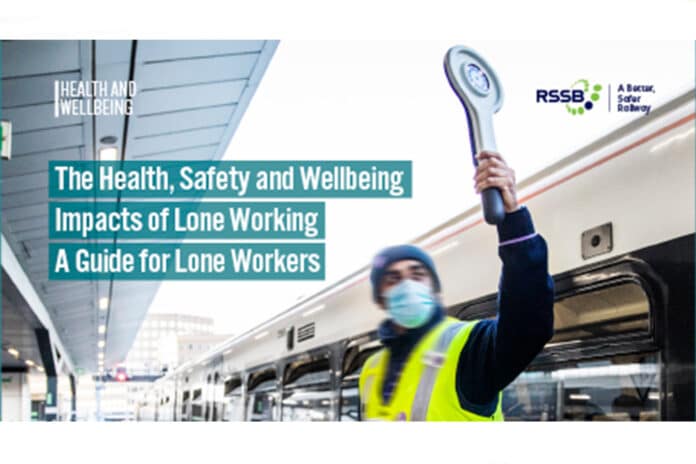Lone workers are exposed to a particular set of challenges. Through recent research RSSB has developed tools to help effectively manage the risks associated with lone working in rail.
RSSB’s research focussed on better understanding the health, safety and wellbeing risks faced by lone workers in the rail industry. While there was some understanding of the safety risks for lone workers, there was a very limited understanding of the health and wellbeing impact of lone working. Additionally, RSSB found that different definitions used in the rail industry to define lone working create inconsistencies in data collection and gaps in risk management.
RSSB’s project ‘Understanding the Health, Safety and Wellbeing Risk and Impacts of Lone Working’ (T1213) focusses on the rail industry and aimed to establish a single definition for lone working, understand the risks associated with lone working and identify good practice to manage the risks identified.
RSSB has developed the following definition by reviewing literature on lone working and consulting with the industry:
A lone worker is…
‘Someone who works physically alone for a number of hours, with low levels of contact with other colleagues.’
Using this definition we estimated that between 47% and 79% of passenger and freight operating company workers could be classified as lone workers. Therefore, lone workers make up a large proportion of the rail workforce and it is important for employers to consider the positive and negative aspects of such roles. These can be influenced by factors such as work location, timing and job content, accessibility, and lone worker characteristics.
The good practices guides that RSSB have produced from the research provide:
· a description of the core characteristics of lone working in the industry
· a list of risks associated with lone working in rail and
· key practical steps for developing risk management processes in line with legal requirements
RSSB has developed three different guides one for lone workers, another for managers of lone workers, and one for human resources and employers. All three guides feature a lone working decision tree that allows readers to identify lone workers. The guide for lone workers features ‘top tips’ for managing health and safety while lone working. The guide for managers and the guide for human resources and employers include checklists and action plans to help readers identify areas for improvement and develop a plan to implement change. All three guides have been endorsed by ASLEF, Unite and TSSA. Learn more by clicking here.
Photo credit: RSSB







































 0113 2082620
0113 2082620 info@railbusinessdaily.com
info@railbusinessdaily.com 15 Mariner Court, Wakefield WF4 3FL
15 Mariner Court, Wakefield WF4 3FL

